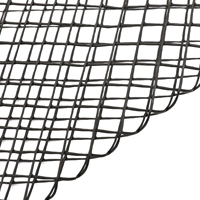The requirements of railway fences for materials and te […]
The requirements of railway fences for materials and technology are railways constructed by the China Railway Administration. Many places pass through places where people live. Some of the usual travel paths are isolated by the railway. Therefore, the railway fence is an effective way to cut off the distance between people and injuries and high-speed trains, especially in the rapid growth and application of contemporary high-speed rail.
It more and more reflects the requirements of railway fences for the material of nets and columns, and the strict requirements of production technology. In terms of materials, we usually know that the track of the train is constantly changing, there are places where residents live, and there are high and low mountain terrain, so to deal with the material, the rail fence should first have Strong terrain compliance. Others should be rigid and tough in layout. For example, high-quality low-carbon steel wire is a good choice. Other aluminum-magnesium alloys are also a good material in corrosion resistance. .
In this way, not only has a good advantage in the production process, even if they encounter some mountains, slopes and multi-bend areas, they have a good compliance. Another is the technological requirements of the rail fence. In the production process, not only should we consider whether it is suitable for use, but also to consider some geographical and weather environments, to deal with the changing factors of the fence, the same as the ordinary environment, are selected high-quality wire rod The finished wire is pulled out, and then the welding method is held. The skills of welding and methods are also very high. The inspection is based on technology and common skills with rigid operations. All of the meshes are made. It can be roughly reflected that every welding point or braided point is very well connected. Even the brightest frame should use the best quality angle steel and round steel.
Railway fences play a crucial role in the tranquility of the environment on both sides of the rail during the entire train operation process, and can effectively and quietly play a role in the isolation protection on both sides of the railway.




 WhatsApp:+8613626888261
WhatsApp:+8613626888261